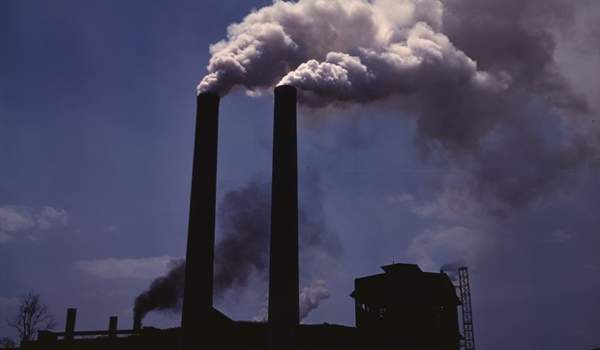Researchers discovered a strong and statistically significant relationship between the spatial distribution of global climate risk and toxic pollution in a new study that combined assessments of the risks of toxic emissions, nontoxic emissions, and people’s vulnerability to them.
For more than three decades, scientists on the United Nations Intergovernmental Panel on Climate Change have focused on human-caused climate change. Their fifth assessment report resulted in the Paris Agreement in 2015, as well as a special report on the dangers of global warming exceeding 1.5 degrees Celsius above pre-industrial levels shortly afterwards. The Nobel Prize-winning team emphasized that mitigating global warming “would make many aspects of sustainable development significantly easier to achieve, with greater potential to eradicate poverty and reduce inequalities.”
University of Notre Dame postdoctoral research associate Drew Marcantonio, doctoral student Sean Field (anthropology), Associate Professor of Political Science Debra Javeline, and Princeton’s Agustin Fuentes discovered a strong and statistically significant link between toxic emissions, nontoxic emissions (e.g., greenhouse gases), and people’s vulnerability to them in a first-of-its-kind study. In other words, the country’s most vulnerable to the effects of climate change are frequently also the country’s most vulnerable to toxic pollution.
In a new study that combines assessments of the risks of toxic emissions, nontoxic emissions and people’s vulnerability to them, researchers found a statistically significant relationship between the spatial distribution of global climate risk and toxic pollution.
They also looked at the correlation between the spatial distribution of toxic environments, total mortality due to pollution, and climate risk, and discovered a strong link. “Deaths resulting from toxic pollution are highest where the distribution of toxic pollution is greatest and, critically, also where the impacts of climate change pose the greatest risk,” they write in their forthcoming PLOS paper, “Global distribution and coincidence of pollution, climate impacts, and health risk in the Anthropocene.”
“It is not surprising to find that these risks are highly correlated, but this article provides the data and analysis to inform policy, data and analysis that were previously lacking,” Javeline said.
Javeline, Marcantonio, Field, and Fuentes used data from three indexes to complete the study. The ND-GAIN index, which includes 182 countries, summarizes a country’s vulnerability and exposure to climate-related risks, as well as its readiness to improve climate resilience. EPI ranks 180 countries based on 24 performance indicators spread across ten issue categories, including environmental health and ecosystem vitality. Finally, GAHP estimates the number of toxic pollution deaths for a country, including deaths from toxic air, water, soil, and chemical pollution worldwide.

To make their findings more useful to policymakers, the authors developed “Target,” a metric that combines a country’s climate impact risk, toxic pollution risk, and potential readiness to mitigate these risks. Singapore, Rwanda, China, India, the Solomon Islands, Bhutan, Botswana, Georgia, the Republic of Korea, and Thailand are the top ten countries they recommend focusing on based on these criteria. Equatorial Guinea, Iraq, Jordan, the Central African Republic, and Venezuela are among the countries at the bottom of the list. These nations are most likely to have outstanding governance issues that currently stand in the way of effectively addressing pollution.
“Notably, our findings reveal that the top one-third of countries at risk of toxic pollution and climate impacts account for more than two-thirds of the global population, highlighting the magnitude of the problem and the unequal distribution of environmental risk. Given that a large portion of the world’s population lives in countries with higher toxic pollution and climate impact risks, understanding where and how to target pollution risk mitigation is critical to maximizing potential human harm reductions “They put pen to paper.
The authors also point out that by reducing toxic pollution in large, populous countries like China and India, neighboring countries will benefit as well. China’s 2013 Air Pollution Prevention and Control Action Plan, which focuses specifically on toxic emissions, is yielding impressive results. Researchers discovered a 40% reduction in toxic emissions since the plan was implemented.
“The goal of Target is to highlight areas where action can be taken to reduce risk to human health and flourishing; however, how that targeting is done (e.g., incentives vs. sanctions) necessitates moral reflection to determine what actions should be taken and who should take them. This is especially true given the general inverse relationship between who is most responsible for creating these risks and who is most vulnerable to them “According to Marcantonio.
During the 2021-22 academic year, the University will host a series of conversations centered on the theme “Care for Our Common Home: Just Transition to a Sustainable Future” through its annual Notre Dame Forum. The forum will feature a wide range of discussions and events over the coming year, inspired by Laudato Si’ and Pope Francis’ continued emphasis on these issues.
The Notre Dame Forum has featured major talks by leading authorities on issues of importance to the University, the nation, and the larger world since its inception in 2005, including the challenges and opportunities of globalization, the role of presidential debates, immigration, and the place of faith in a pluralistic society.
















